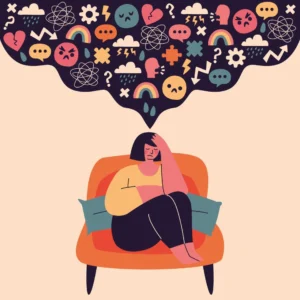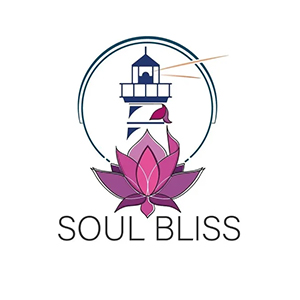João Pedro Soares
According to Traditional Chinese Medicine
Theoretical framework
When we translate a Mandarin word, the translation is not so much a concept as it is a context. It is rarely possible to make a literal translation, and to explain a translation it is necessary to know many implied ideas or explain many definitions.
For example, the character 日 translates simultaneously to “Sun” and “Day”, 月 translates to “Moon” and “Month”. These values are not dissociated and there is always a connection between the various different translations even if they are not immediately obvious to us. To go deeper into this explanation: unlike us in the West who follow the Gregorian calendar (also called the Christian calendar) they follow the Lunar calendar which is the oldest known chronological record. Each month corresponds to a cycle of the moon. In China, the year is 4718, with the counting starting at the beginning of the reign of Huang Di the Yellow Emperor (or 110 adopted in Taiwan marking the beginning of the Republic of China).
There are other counts in other countries, I will mention Thailand, because I have a special love, where the year begins with the Spring Festival (Songkran) with 543 more counts than our calendar. As is easy to see, they do not count the years from the birth of Jesus, but from the death of Buddha.
But I’m getting off topic. What I wanted to convey with this is that concepts cannot be interpreted literally, but have to be “translated” in a way that encompasses the explanation.

The concept of Kidney merges with the concept of the Water element. It is not possible to explain what the Kidney is without framing it within the theory of the 5 Elements. There are relationships between the elements and these in the physiological or pathological state of the organism.
In the human body, each element, as you can see in the image above, is associated with an organ, a viscera, a sense organ, a “tissue” (tissue to simplify the explanation) and an emotion. In nature, each element is manifested in a season, a direction, color, flavor, and, without going into too much detail, a state and a mutation.
Why is this important? Because there are interactions between organs and often a function or pathology cannot be explained without the link with other organs and functions. A healthy lung strengthens a healthy kidney. An injured spleen and/or heart can affect the kidney, a weak liver will overload the kidney. An organ cannot be treated using only points on its meridian. And, again, when we use the name of an organ it does not mean that we are talking about the organ literally, but rather the context and all the relationships in which that organ is involved.
No more beating around the bush.
Kidney Functions
- Store the Essence (Jing). Govern birth, growth, reproduction and development.
- Produce the Marrow, supply the brain and control the bones.
- Governs water.
- Controls Qi reception.
- Opens in the Ears.
- It manifests itself in the hair.
- Controls the lower holes.
- Houses willpower.
Store the Essence (Jing). Govern birth, growth, reproduction and development
To understand this point it is necessary to take into account that according to Traditional Chinese Medicine there are 3 sources of energy in the human body. One comes from food, another from breathing and finally there is one called Essence that is stored in the kidneys. Not to complicate this explanation too much by talking about the interactions between these energy sources and 2 different types of Jing. I’ll just say that the energy stored in the kidneys is finite. It is inherited from our parents. We hold the maximum when we are born and use it throughout our lives.
Our growth, development, sexual maturity, and reproduction are a function of the existence of the Essence. This controls the various stages of change in life and aging consists of the decline of the Essence during life. If the Essence is abundant there will be great vitality, virility and fertility. If the Essence is weakened, the opposite will happen. The Essence cannot be replaced, but it can be preserved.
Produce the Marrow, supply the brain and control the bones
Brain function is closely related to the Kidney and Essence. The entire bone matrix, bone marrow, brain, spinal cord depends on the Kidney. As we lose Essence we also lose memory, concentration, vision and thinking. All skill and intelligence depend on strong Essence and Kidney.
Governs water
Controls the flow of body fluids. Controls urine. But it also keeps the organs that need it moist.
Controls the reception of Qi
This point refers to the interaction of the Kidney with the Lung and its function of receiving energy through breathing.
It opens in the ears
If the kidney is weakened, it can affect hearing or tinnitus.
It manifests itself in the hair
Abundant essence will make the hair grow healthy and vigorous, otherwise it may become thin, brittle and fall out.
Controls the lower holes
Self-explanatory 🙂
Houses willpower
The kidney determines our willpower.
Mixing it all up

- Fear damages the kidney. There are many films in which, when someone is in a situation of fear, they urinate involuntarily, without controlling their lower orifices. Fear also immobilizes, losing the person’s willpower.
- As we get older we lose memory and concentration. Impotence and vaginal dryness may occur in women. We may lose control of our sphincters, we may need diapers again.
- Our bones become more brittle and teeth can fall out.
- Our hair falls out and we can lose our hearing.
- This is all part of the beautiful natural cycle of life.
There is no way to extend it yet, but we can take care of ourselves so that we remain in good condition in our advanced years.
Traditional Chinese Medicine seeks to improve the quality of life of those who use it.
Book a session and find out how.
Bibliography:
“Diagnosis in Chinese Medicine” – B. Auteroche – P. Navailh; ANDREI Editora LTDA, São Paulo; 1992
“The Fundamentals of Chinese Medicine A Comprehensive Text for Acupuncturists and Herbalists” – Giovanni Maciocia; Editora Roca LTDA; 1996

